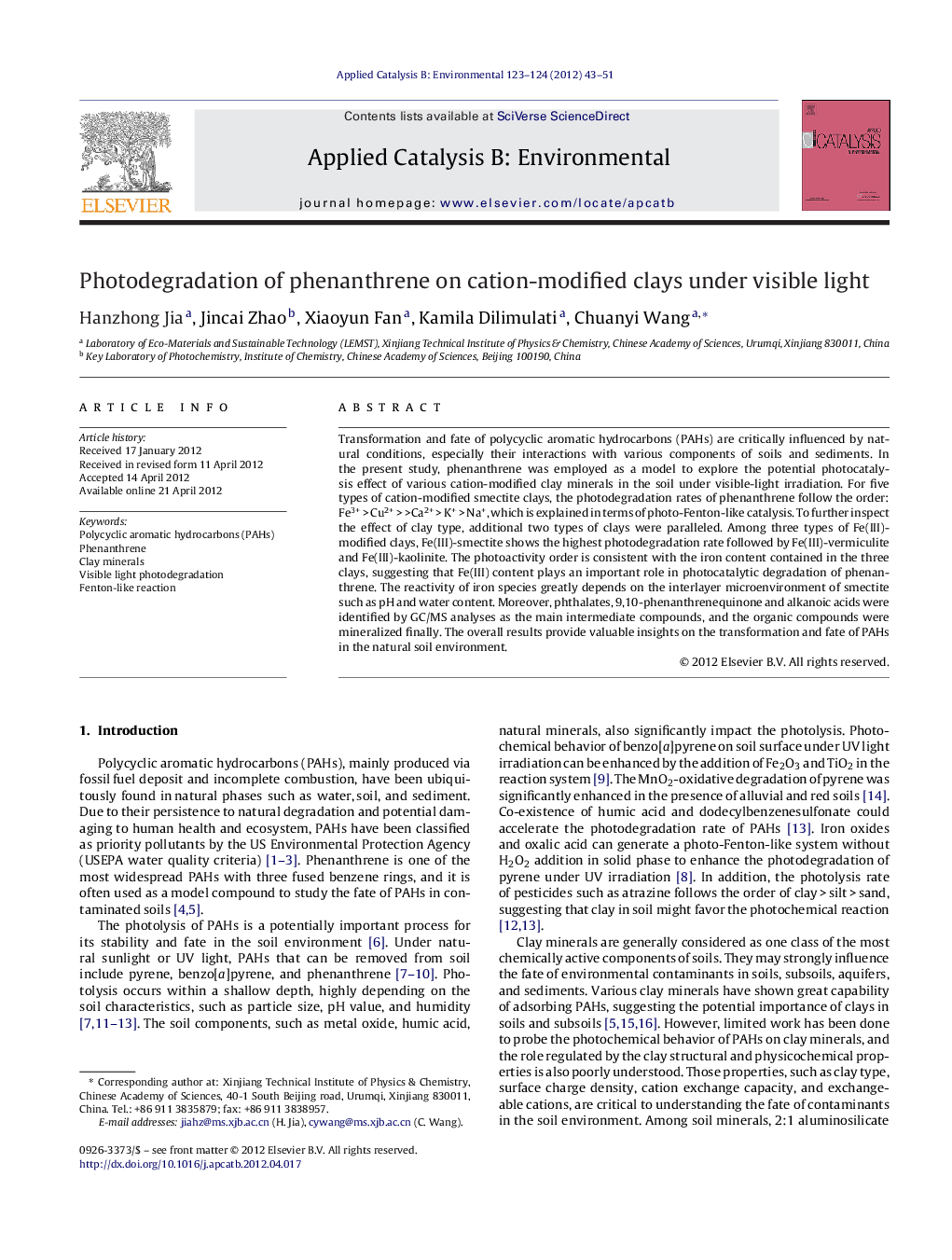| Article ID | Journal | Published Year | Pages | File Type |
|---|---|---|---|---|
| 46121 | Applied Catalysis B: Environmental | 2012 | 9 Pages |
Transformation and fate of polycyclic aromatic hydrocarbons (PAHs) are critically influenced by natural conditions, especially their interactions with various components of soils and sediments. In the present study, phenanthrene was employed as a model to explore the potential photocatalysis effect of various cation-modified clay minerals in the soil under visible-light irradiation. For five types of cation-modified smectite clays, the photodegradation rates of phenanthrene follow the order: Fe3+ > Cu2+ > >Ca2+ > K+ > Na+, which is explained in terms of photo-Fenton-like catalysis. To further inspect the effect of clay type, additional two types of clays were paralleled. Among three types of Fe(III)-modified clays, Fe(III)-smectite shows the highest photodegradation rate followed by Fe(III)-vermiculite and Fe(III)-kaolinite. The photoactivity order is consistent with the iron content contained in the three clays, suggesting that Fe(III) content plays an important role in photocatalytic degradation of phenanthrene. The reactivity of iron species greatly depends on the interlayer microenvironment of smectite such as pH and water content. Moreover, phthalates, 9,10-phenanthrenequinone and alkanoic acids were identified by GC/MS analyses as the main intermediate compounds, and the organic compounds were mineralized finally. The overall results provide valuable insights on the transformation and fate of PAHs in the natural soil environment.
Graphical abstractPhotodegradation of phenanthrene on cations-modified clays under visible light. Figure optionsDownload full-size imageDownload as PowerPoint slideHighlights▸ Clay minerals have great potential to act as catalysts for the photolysis of PAHs. ▸ Photolysis rate is determined by the interaction of phenanthrene with clay surfaces. ▸ Photodegradation rate are strongly dependent on the species of iron on clay surface. ▸ Phthalates were identified as intermediates during phenanthrene photodegradation.
